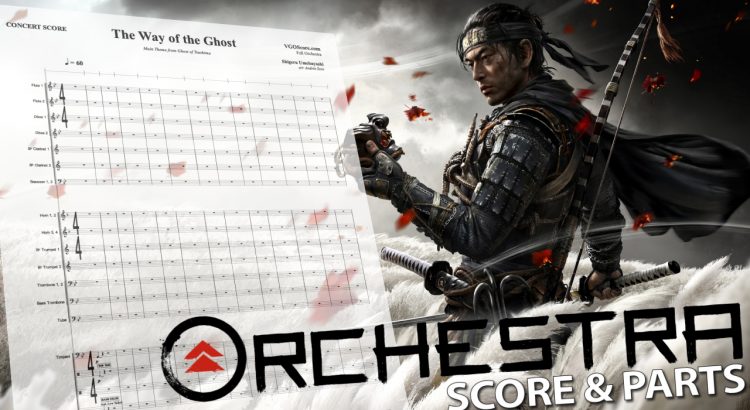The Way of the Ghost
Main Theme from Ghost of Tsushima
Composer: Shigeru Umebayashi Arrangement: Andrés Soto
In my latest orchestral arrangement, I delved into the hauntingly beautiful world of “The Way of the Ghost,” the main theme from the critically acclaimed video game Ghost of Tsushima. This piece, originally composed by Ilan Eshkeri and Shigeru Umebayashi, stands as a profound testament to the game’s narrative, encapsulating the essence of its setting and the journey of its protagonist, Jin Sakai. The composition’s blend of traditional Japanese musical elements with the cinematic scope of Western orchestration presents a unique challenge and opportunity for reinterpretation in a symphonic context.
“The Way of the Ghost”
The original composition is distinguished by its evocative use of traditional Japanese instruments, such as the shakuhachi, koto, and shamisen, which are pivotal in creating the game’s immersive atmosphere. These instruments not only provide a cultural and historical context but also convey the emotional depth and complexity of the protagonist’s journey. The melody, primarily carried by the shakuhachi, has a haunting quality that reflects the game’s themes of honor, sacrifice, and the internal conflict between duty and personal conviction.
Challenges of Reorchestration
One of the primary challenges in reorchestrating “The Way of the Ghost” for a symphonic orchestra was preserving the integrity and distinctiveness of the original composition’s sound palette. The unique timbres and expressions of traditional Japanese instruments had to be translated into the orchestral setting without losing their essence. This required careful consideration of orchestral instruments that could mimic the characteristics of these traditional instruments while integrating seamlessly into the broader texture of the symphony orchestra.
The shakuhachi’s breathy and ethereal sound was recreated using a combination of woodwinds, with the flute playing a central role, supplemented by the alto flute and piccolo to capture the wide dynamic and emotional range of the original melody. The koto and shamisen, known for their distinctive plucked sounds, presented a particular challenge. The harp, together with strings, was used to replicate the delicate yet resonant quality of these instruments, providing a rhythmic and harmonic foundation that echoes the traditional Japanese music’s influence.
Another significant challenge was maintaining the original composition’s dynamic balance between intimacy and grandeur. “The Way of the Ghost” features moments of profound solitude and reflection, juxtaposed with sweeping, cinematic passages that reflect the epic scope of Jin Sakai’s journey. Achieving this balance in an orchestral arrangement required meticulous attention to dynamics, orchestration, and thematic development, ensuring that each section of the orchestra contributed to the narrative arc of the piece.
Conclusion
Reimagining “The Way of the Ghost” for a symphonic orchestra has been a deeply rewarding endeavor, offering an opportunity to explore the intersection of traditional Japanese music and Western orchestral traditions. This arrangement pays homage to the original composers, Ilan Eshkeri and Shigeru Umebayashi, while presenting their work in a new light, showcasing the versatility and emotional depth of orchestral music.
The project highlights the universal themes of Ghost of Tsushima, transcending cultural and musical boundaries to speak to the shared human experience of conflict, sacrifice, and the search for identity. Through this orchestral arrangement, “The Way of the Ghost” continues to resonate with audiences, inviting them to experience the game’s rich narrative and atmospheric world in a new and profound way. It stands as a testament to the power of music in video games and the endless possibilities for creative reinterpretation within the symphonic tradition.
Download PDF: Patreon
Download XML editable file: Patreon

